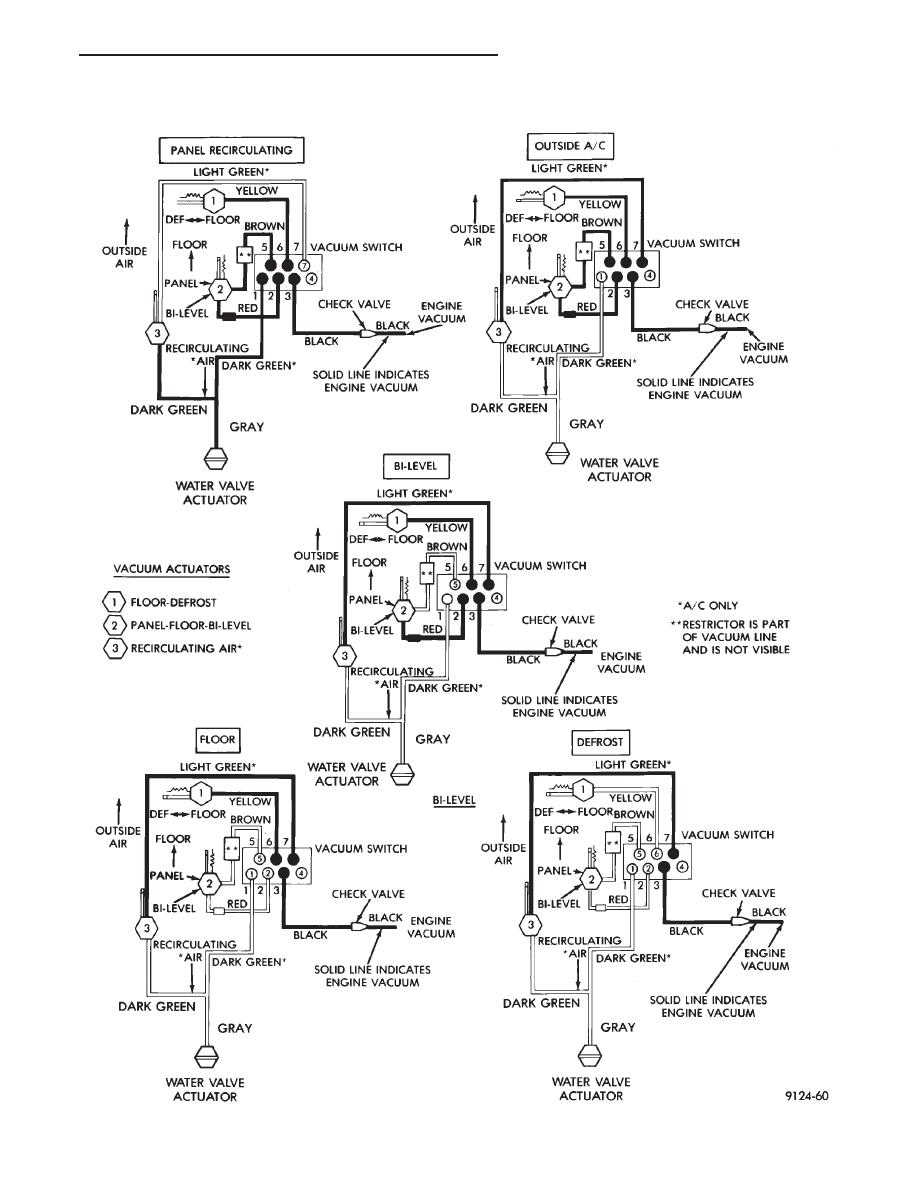Chrysler Le Baron, Dodge Dynasty, Plymouth Acclaim. Manual - part 186

VACUUM CIRCUITS—HEATER OR HEATER A/C CONTROL
Ä
HEATING AND AIR CONDITIONING
24 - 5
|
|
|

VACUUM CIRCUITS—HEATER OR HEATER A/C CONTROL Ä HEATING AND AIR CONDITIONING 24 - 5 |